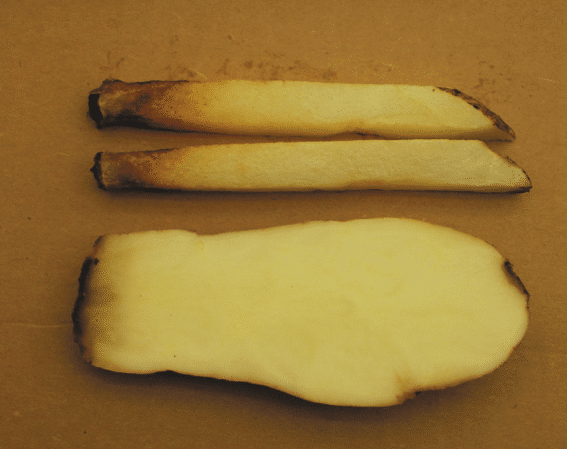Explaining why sugars can be good, but also bad for potatoes.
Potato sugar levels can be good or bad depending on what stage of the life the potato is in. Paul Bethke, a plant physiologist with the United States Department of Agriculture, dove into the double-edged life of potato sugars during a presentation at the virtual Washington-Oregon Potato Conference on Jan. 26, 2021. Here’s an overview of his main points about the double life of sugars.
What are sugars?
“Sugars are produced by leaves from sunlight, carbon dioxide and water, in the process of photosynthesis, one of the most amazing processes in all of biology. Those sugars are used for growth of the plant and for maintenance of existing structures.”
Why are sugars needed for potatoes?
“Once we have potatoes forming, the potatoes grow off of sugars. Sucrose made in leaves is transported down the stem, through the stolen and ends up in developing tubers. That sucrose is the foundation for starch production. It’s worth noting that where the sugars go in a plant depends on the time of year.
Early in the season, sucrose and other sugars produced by leaves are used to produce additional leaves and stems. That is, the vine dry matter content increases. Later in the season, almost all of the new dry matter accumulation occurs in tubers. This is relevant to us because it tells us is that in the first half of the growing season, we produce the vines, we produce the leaves. And then we have to use those vines and those leaves during the second half of that season to fill the tubers, at a time when we’re not making any more leaves. We just have to maintain them and protect them.”
When do sugars cause problems?
“Cold storage increases tuber sucrose and invertase both, and as a result, we see low-temperature sweetening or cold-induced sweetening, pick your favourite term. Chips or fries stored warm might have a nice colour, but as you store them in increasingly cooler temperature, you increase the rate of sucrose production. This is because sucrose production is a common response to low temperature stress in potatoes and in other plants, and chips or fries become darker and darker. Sucrose increases as the temperature drops, and an increase in invertase is triggered by cooler temperatures as well.
Another plague of the processing industry is reducing sugars that accumulate during sugar end defect formation. The difference between beautiful french fries and these sad french fries is the sugar ends, the accumulation of sucrose that occurred on the stem end of these potatoes as a result of an environmental stress, that also increased the activity of invertase. And when they were cooked, you got these dark ends.”
What is the duality of sugars?
“Sugars are essential for tuber bulking, but they can be problematic for processing quality. Sunlight is one of your most valuable inputs, try to maximize your use of it. And finally, when we’re thinking about chip and fry quality, high quality depends on managing sucrose and avoiding invertase, which largely means avoiding stresses that cause the potatoes to produce elevated sucrose and elevated invertase.”
Related Articles
Making Potato Storage Easier with Sugar Sampling
Stress Factors and Management Practices for Sugar End Disorder and Stem-End Chip Defect











